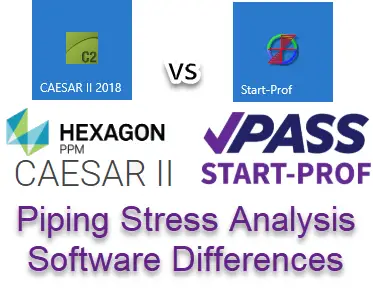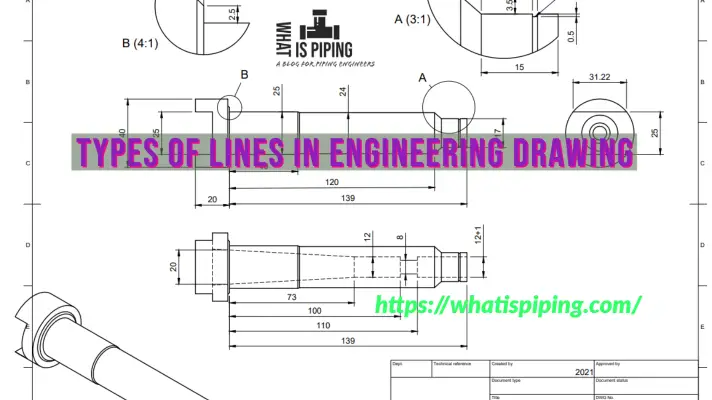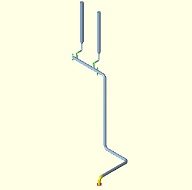Every Organization prepares its own piping stress analysis specification or flexibility specification to cater as a guideline for stress analysis of critical lines and for uniformity of jobs performed by pipe stress engineers. From project to project, this specification may vary slightly but overall the contents are almost similar. In this article, I will explain the points which must be addressed/ included while making a flexibility specification.
Scope/Purpose of Flexibility Specification:
All engineering documents must inform their end-user what the content is all about and must start with Scope or Purpose. This part document will supply information about how the user will be benefited from the document. What is the purpose of preparing the document? What points are covered in the document and which points are excluded?
Abbreviations and Definitions:
Mention the detailed names of abbreviated terms. Definitions are also required to provide in this section.
Reference Documents:
In this section, the specification will inform the references used for making the specification. The Specification will list all the codes and standards, in-house work instructions, or specifications that will be used in the project.
Criteria for Stress Analysis:
This part mentions the minimum criteria which have to be adhered to while performing pipe stress analysis. Code equations that need to be followed etc.
Stress Critical line list:
This section mentions the criteria for deciding stress critical lines. The factors like line size, temperature, equipment connection, etc force the stress engineer to consider the system for stress analysis using Caesar II software.
Analysis Software:
This section mentions which pipe stress analysis software (Caesar II, Start-Prof, AutoPIPE, CaePIPE, Rohr2, etc) to use for that specific project. The version of the software must be included. It is always better to perform the analysis with the latest version of the software.
Analysis Parameters: In this point explain the required parameters for analysis like:
Installation temperature: Mention the installation or ambient temperature of the location where the project site is.
SIF for 45-degree branch connections: Inform the engineers to use any specific criteria for calculating SIF for 45-degree branch connections.
PSV Reaction Force: Inform the engineer how to calculate the PSV reaction forces. Any dynamic load factor if needed to be used.
Slug Loads/Two-Phase flow: Inform if any specific requirement is there for two-phase flow lines like the frequency of the system needs to be maintained above 4-5 Hz, for Slug flow if dynamic analysis to be performed, etc.
Wind Loads: Mention the criteria for wind loads (what’s the size), what shape factor to consider, which code to follow and parameters to be used etc.
Seismic Loads: The criteria, code for seismic analysis, what’s the seismic co-efficient, etc.
Tank Settlement: if any tank settlement value has to be considered for analysis of tank piping. Settlement data is normally obtained from the Civil Department from the soil investigation report.
Friction Effects: What will be the friction coefficient for various contact surfaces?
Displacements of Tie–in Points: Criteria for consideration of tie-in points and battery limit conditions.
Thermal Displacements of Equipment: If the equipment is to be modelled or displacement values to be used.
Support Lift Off: Any criteria for hot sustained checking or using ALT Sustained cases as per B 31.3?
Insulation Density: Any guideline for the value of piping insulation density throughout the project.
Pipe Sagging: The accepted value of pipe sagging in sustained case. For example for process lines 10 mm and for flare and steam lines 3 mm.
Flange Leakage Checking: Criteria and method for flange leakage checking if any.
Allowable Nozzle Loads: If any multiplication factor is to be used along with standard allowable nozzle loads. For example twice API 610 values for Centrifugal Pumps, 3 times API 617 for Centrifugal compressors, and Twice API 661 for Air Fin Coolers etc.
WNC Checking: Criteria for alignment/anchor-free analysis and accepted displacement values if any for rotary equipment. If springs are to be kept in an unlocked condition.
Modelling Criteria: If guide and line stop to be modelled without friction and gap if any density is to be considered for flare headers during modelling etc.
Stress Analysis Documentation: In this section briefly describe which reports (For example input echo, restraint summary, stress summary, etc.) are to be submitted to clients as the final stress analysis document of each stress system.
Any guidelines for supporting the piping system?
The above points are the minimum required points. Additionally, you can add many more points depending on the project requirements. So, hopefully, by now you will be able to produce the flexibility specifications of your own.









Could you please comment on below:
“Displacements of Tie–in Points: Criteria for consideration of tie in points and battery limit conditions.” What are the typical requirements for displacement of tie-in points? Do you require stiffness as well for these specified displacements. That will be great if you can have a separate article to talk about tie-in point.
Welldone!